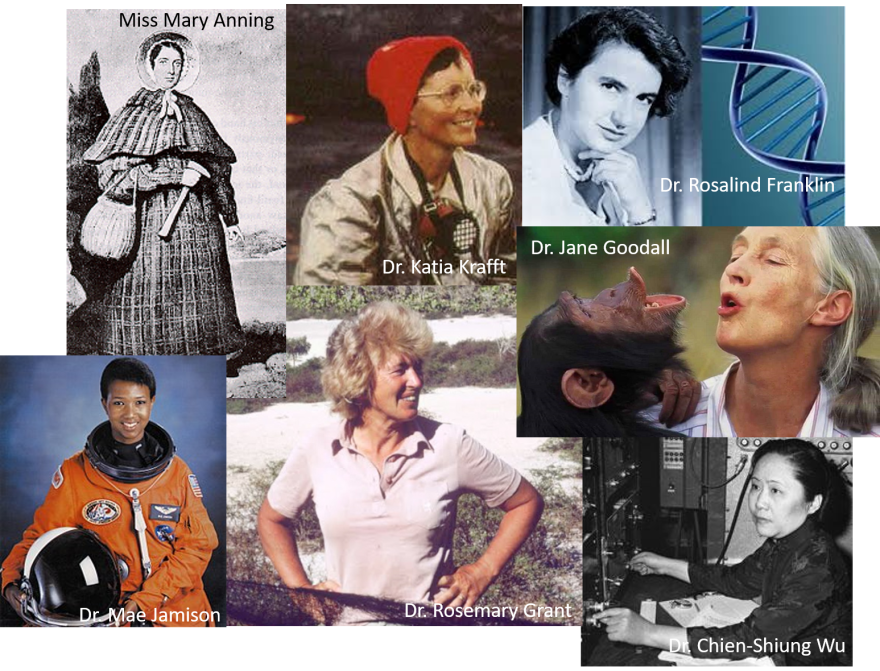Can you name a famous woman scientist? Can you name two?
“I don’t think so.”
“Yeah, there were some females that were involved in discovering nuclear fission and things like that, I can’t remember their names though.”
“I know we talked about some in my chemistry class, but off the top of my head I can’t remember their names.”
A recent poll indicates that 81 percent of Americans cannot name any scientist. Of the 19 percent that named one, only 2 percent named a woman.
In the United States, women earn 50 percent of Ph.D.s in the life sciences, but only 36 percent of assistant professors in the nations' universities are women, and 18 percent of full professors in the life sciences in the U.S are women.
Dr. Helga van Miegroet is a professor in the Department of Wildland Resources at Utah State University. She earned her Ph.D. in forest soils and mineral cycling from the University of Washington in Seattle. She spent nearly 40 years studying soils and biogeochemistry before she decided to go back to school to pursue a master’s degree in sociology. She wanted to address a question that had nagged her throughout her entire career.
Why did she struggle so hard to get recognition for her work?
“I had been surrounded by mentors that had given me a path to success," she said. "All the advice was given genuinely with good intents because it had worked for them. Somewhere along the line in my career, it stopped working. Literally, I went to leadership in my professional society and said, 'Here’s my portfolio, look at it. What am I not doing right? What should I improve?' and their answer would come back, ‘We don’t know. We can’t tell you.'
“I felt like people were saying, ‘No, you’re not good enough,’ and I did not know how to improve myself because nobody would tell me. And the bottom line was nothing was wrong with it.”
Eighty-two percent of Americans trust scientists more than other public figures to explain science and over half of Americans think scientists should be involved in the development of public policy. However, this begs the question, what do Americans think a scientist is?
“Lab coat, goggles.“
“Someone in a lab coat, somebody with protective glasses on doing some work in a laboratory.”
“I think a lab coat and safety goggles, and usually a chemist, as a scientist.”
“I think the white lab coat is the first thing that comes to mind.”
According to Dr. van Miegroet: “What we’re doing is we’re actually activating schemas in our head as to what is the ideal scientist, what is the ideal worker?’ And the science and the engineering disciplines have historically been dominated by men, so the rules and the procedures and the norms have been established by the ruling class, which is the men.”
Discrimination against women in the sciences is well documented. Many sociologists describe the phenomenon as a leaky pipeline, through which more women are lost than men at every career-advancement stage.
Helga’s experience is in no way unique. But what is the solution?
Since Helga began her career 40 years ago, organized efforts have developed to encourage women to take on careers in science, and to provide role models of women who work in science. Organizations like The Association for Women in Science, The European Platform of Women Scientists, and The Organization for Women in Science for the Developing World.
Recently, 500 Women Scientists was formed. It is a grassroots organization that supports women scientists and encourages women to take an interest in science.
“500 Women Scientist means to me just a place or a community of support. A community to encourage science and to encourage women scientists. And I think that’s important," said Dr. Julie Young, co-founder of the Utah State University chapter of 500 Women Scientists.
“Sure there’s scientists you think of as your traditional lab coat scientist, but then there’s a lot of other kinds of scientists too," she said. "We’ve had women from engineering, from the private industry, show up. We’ve had women from anthropology, all different fields, and I think that’s important because there’s so many ways science is done and having people say, ‘Hey I’m a scientist' or 'I support science’ is more important than a single person or a single organization defining it.”
Although the battle for equal representation of women in science is not won, we have made progress. Dr. Helga von Miegroet again:
“One of the things that I didn’t expect to find was how quickly we can actually make changes," she said. "And in this state right now we have several institutions of higher education that have women at the helm. There’s evidence in the literature that individuals need to be able to imagine themselves in a place. So it’s not enough to have this internal drive but you also have to be able to see a place for you in whatever institution you’re considering or whatever workforce.”
Last month a woman won the Nobel Prize in physics. She was only the third woman to win in the history of the prize.
Do you know her name?
It’s Donna Strickland. The laser technology that she invented with her co-author, Dr. Gerard Mourou, is now used for many applications including drilling, cutting and even some eye surgeries.
The Utah Women’s Giving Circle, a grassroots community with everyday philanthropists raising the questions and raising the funds to empower Utah women and girls. Information available here. And the Utah State University’s Center for Women and Gender, providing a professional and social climate to enhance opportunities through learning, discovery, and engagement. Information available here.


